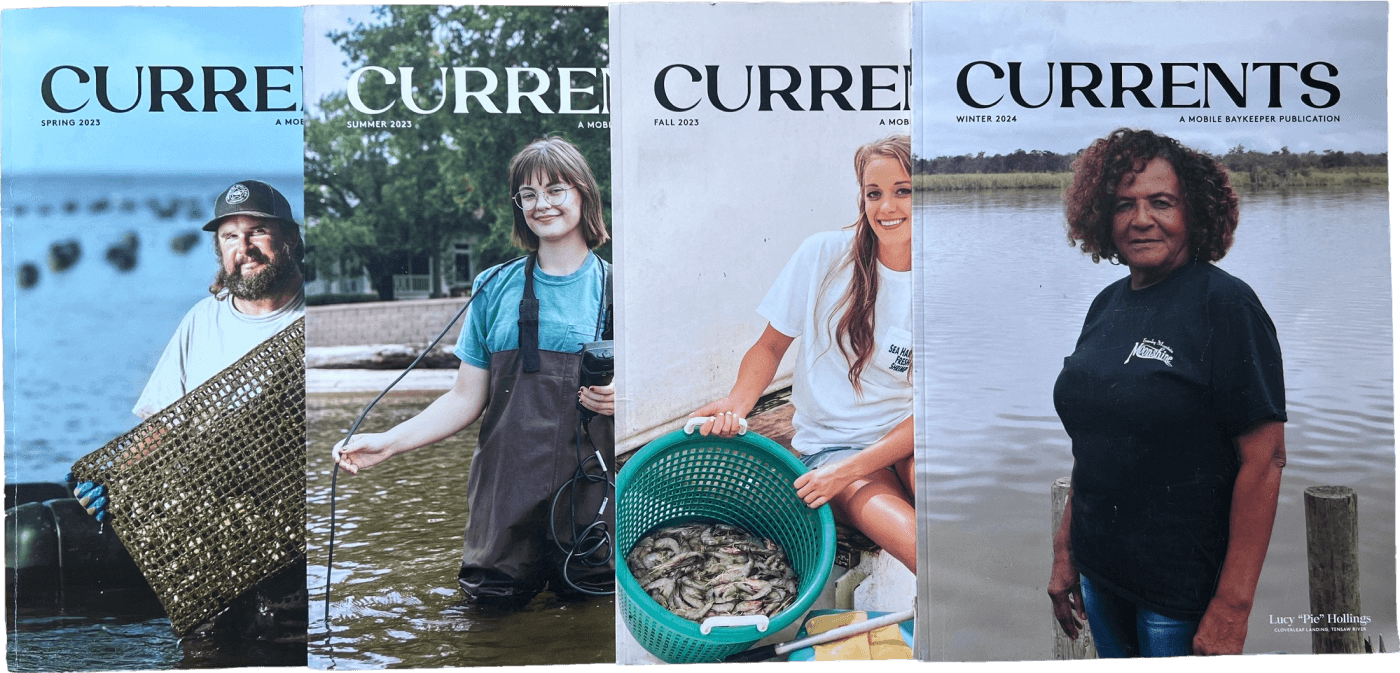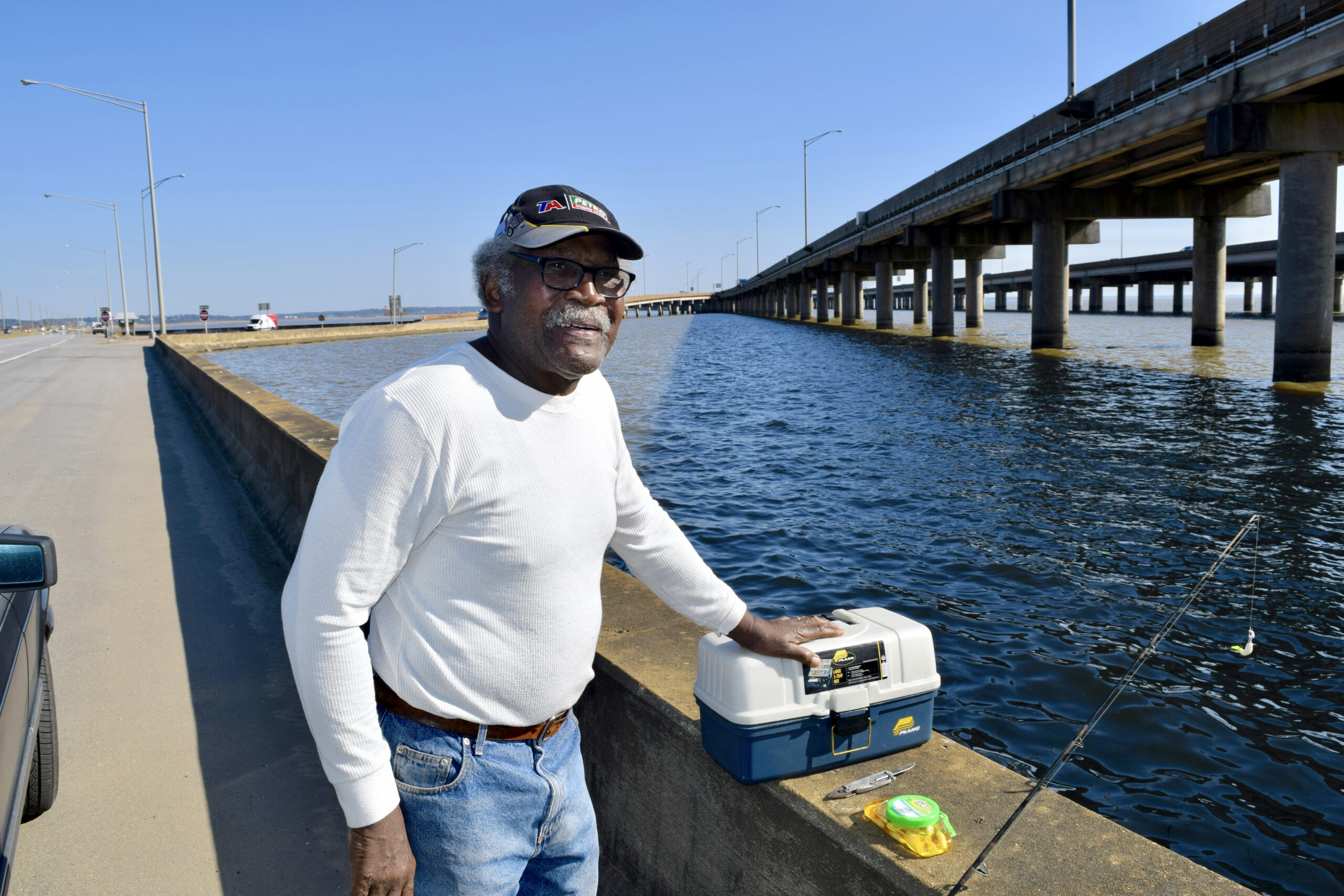
This article is from Mobile Baykeeper’s print quarterly, CURRENTS. The magazine is mailed to active members who have given more than $50 in 2023. To get on the magazine’s mailing list, donate here.
by Caine O’Rear
Finnell Forrest has been fishing off the Causeway in the Mobile-Tensaw Delta for nearly a decade. His dad, who gave up fishing years ago, started taking him here when he was a kid.
At this little spot on the Blakeley River, not much more than spitting distance from the Causeway, Forrest and his buddy David Stallworth angle for largemouth bass, brim, crappie, redfish, and speckled trout. But no black drum — they let that go. “Too many worms in them,” he says.
Finnell likes fishing in the spring and fall best. He watches the tidal calendar and prefers fishing this locale to a falling tide. “The Blakeley is a pretty spot,” he says. “I get in my boat sometime and go up the river a bit. It’s a 17-foot-center console called a Bayhawk. It’s my first boat.”
On most days, Finnell uses a spinning rod with a J-hook and cork, with about three to four feet between bobber and hook. “[These freshwater fish] don’t eat down, they eat up,” he says. “They’re an ambush fish so they have to look up at their prey and eat them.” Today he and David are fishing with shiners and live shrimp they picked up at the bait shop just down the road, “Hooked By The Bay,” the last of its kind on the Causeway.
After a day on the water, Finnell cleans his haul at home and fries them up, using a mixture of cornmeal and wheat flour, and that seems to work pretty well, he says. Pan-fried mostly. Sometimes a deep fry. Baked occasionally.
Asked what he likes most about fishing the Delta, he says it’s “the relaxation, the wildlife. It’s peace of mind.”
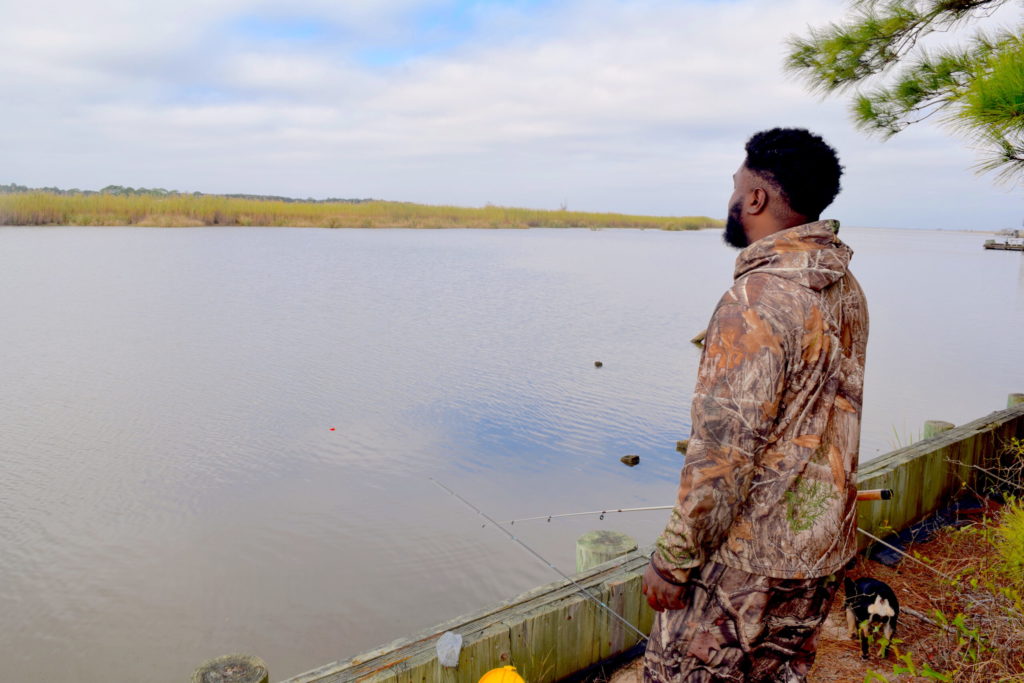
But even among the scenic splendor, threats loom. From the patio of the Bluegill Restaurant, where I find myself later — just a hop, skip and a jump from Finnell’s fishing spot — you cannot see the candy-striped smokestacks of Plant Barry rising twenty miles away in north Mobile County, at the site of Alabama Power’s 600-acre coal-ash pond. The back-end of the restaurant, which sits on the eastern portion of The Causeway in Spanish Fort, looks out over Pass Picada channel — a veritable honey-hole for redfish, speckled trout, and largemouth bass— before flowing into Chacaloochee Bay. Families stand along the rickety dock after dining and kids angle for privileged glimpses of alligators loitering idly for scraps.
Standing along the Pass in the magic hour, among the cattails and cordgrass, hyacinth and lotus blooms, it’s easy to forget the elephant that looms northward in the Delta. Before the 2008 coal-ash spill in Kingston, Tenn. — a spill that resulted in nearly $3 billion in damages, and the deaths of cleanup workers — the issue of coal ash was not part of the public imagination.
Over the past seven years, due to the work of Mobile Baykeeper and others, coal ash is now very much on the minds of coastal Alabamians. And there are other threats you’d soon as well forget, as you soak up the Amazonian wonder: things like the BP oil spill, the dangers posed by dredging, and the increased stormwater runoff brought on by rapid development.
In the lower reaches of the Delta, where it traverses the Causeway and flows into Mobile Bay, there are no fish consumption advisories issued by the Alabama Public Health Department. But northward along the Mobile River, at the Cold Creek location, the state advises that no species of fish be consumed due to mercury contamination.
At David Lake, also on the Mobile River, advisories are issued for largemouth bass and black crappie. It’s worth noting that if a location or species does not have an advisory, it means there is not enough data on that site, not that it is automatically safe to consume fish from there. So it stands to reason that a largemouth bass, or black crappie, or any freshwater fish coming from up river and traveling to the lower Delta, is likely at risk for contamination. For subsistence fisherman who rely on those fish to feed their families, that’s not good news.
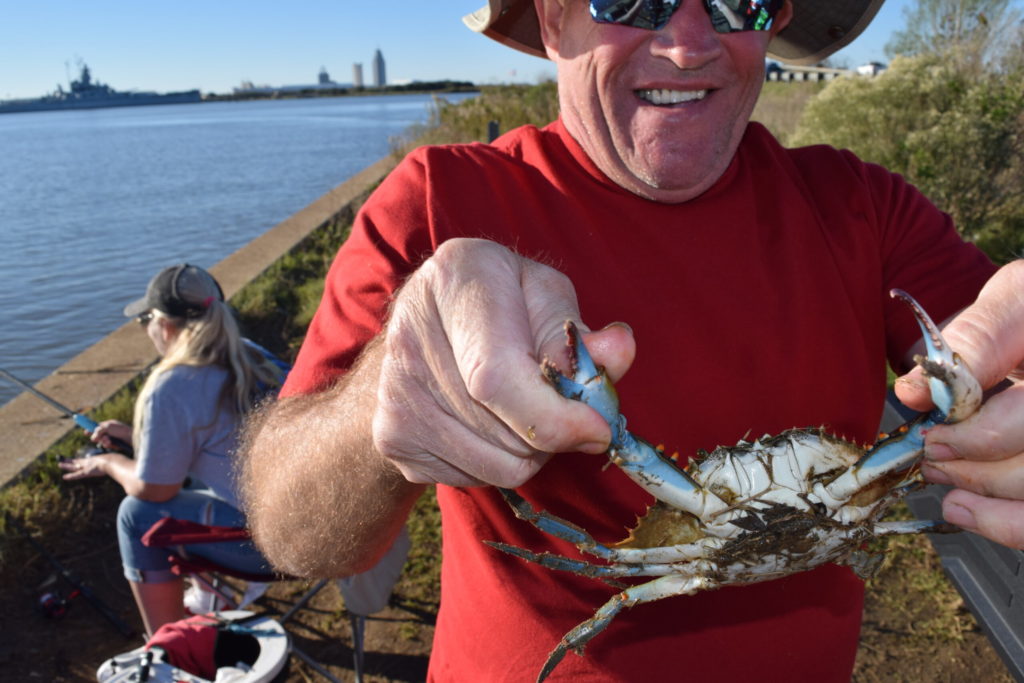
It’s been said that if you don’t take the Causeway the devil will get you. And while I’ve never regarded the Bayway as the Highway To Hell, there is some truth in the statement. Anyone who’s been stuck in gridlocked traffic on the Bayway when nature calls knows exactly what I’m talking about.
To me, the Causeway is a relic of an older Mobile, and it bears the vestiges of local charm. In addition to being home to some of the region’s best eateries, it is also the site of two public parks (Five Rivers Delta and Meaher State Park) that are first-rate. It’s the part of Mobile that connects so many to the Delta and Bay on a daily basis. For some, it’s the only chance to glimpse “America’s Amazon,” and yet the view alone is enough to spellbind.
Constructed in 1926, The Causeway — officially known as Battleship Parkway — served for decades as the only artery connecting Mobile to Baldwin County by road. Today, this stretch of highway operates as a psychic demarcation point, a place where you can see the majesty of a byzantine watershed — one dominated by freshwater rivers, sloughs, and creeks — as it empties into Mobile Bay, sluicing through the embankment as a brackish mix.
On any given day, you can find a host of fisherman gathered along its shores and concrete shoulders. Carl Grady is often one of them. When he’s off work and the rain isn’t coming down, Grady can usually be found kicking back along the roadside and fishing with his wife Lillian. This is true year-round, but especially so in March, when the redfish really start coming in.
A native of central California who now lives in Chickasaw, Carl has been fishing the Bay side of the Causeway for eight years. He usually sets up on the Mobile portion of the highway, a few hundred yards from the Spanish Fort line. Most days he’s aiming for redfish, though today’s catch has yielded a bucket of blue crabs and a nice black drum. At this spot, he fishes with dead shrimp and uses J-hooks on a spinner with no cork. The crabs he hooks with cut-up croaker.
Carl checks the tide charts often. He says he generally has better luck with the reds on the Causeway when the tide’s coming in. With black drum, it seems to be the opposite.
Tonight he says they’ll fry up their catch with a little Cajun seasoning and make fish tacos.
While Carl and his wife do a good bit of surf-fishing in Orange Beach, this is the couple’s go-to spot, just a short jaunt from Chickasaw by interstate. It’s a good life, but the fishing ain’t what it used to be.
“What we hate about this place is that people trash it,” Carl says. “They need a dumpster [out here] where people can put their garbage. We bring a trash bag with us and pick it up while we’re here … and for a while we didn’t even want to come down here it was so trashy … But the thing is now, with the colder weather, people don’t want to come out. It’s more in the spring and summertime … they just don’t even care.
“But really, the fishing used to be a lot better,” Carl continues. “[Too many people now] keep undersized fish, and that makes it where the babies can’t grow. These days it’s just hit and miss. When we used to come here, even up to about three or four years ago, we were landing just big freaking redfish.”
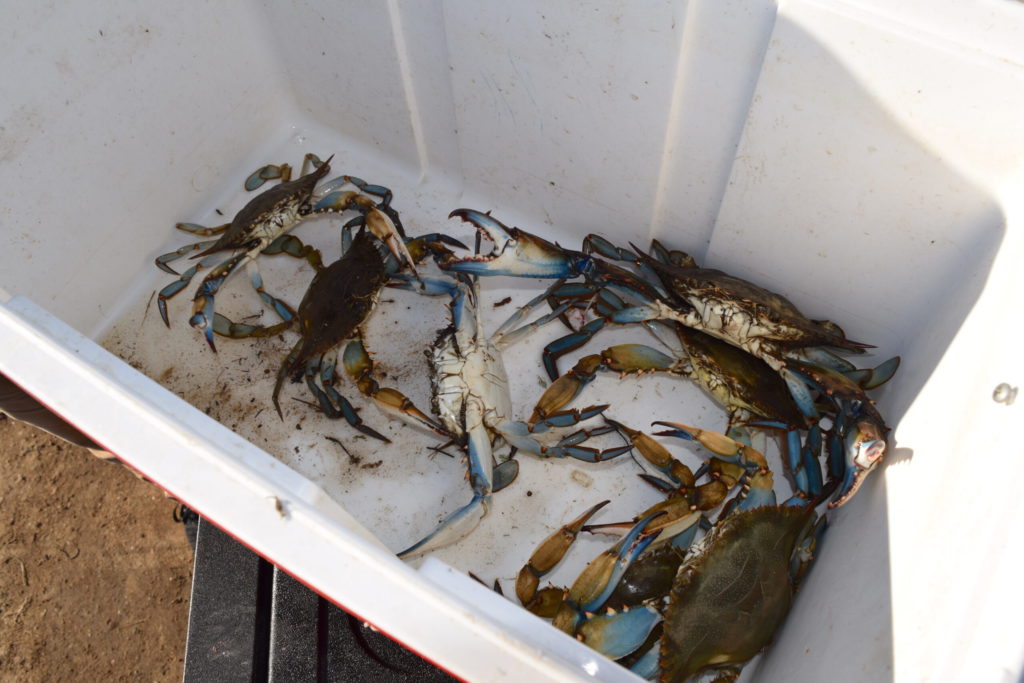
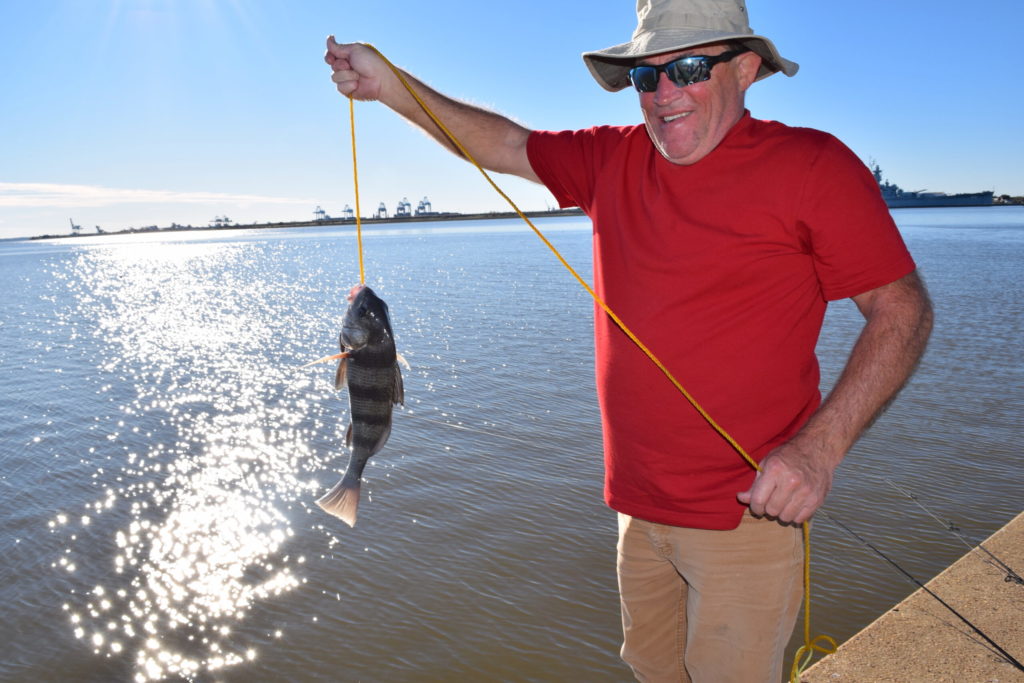
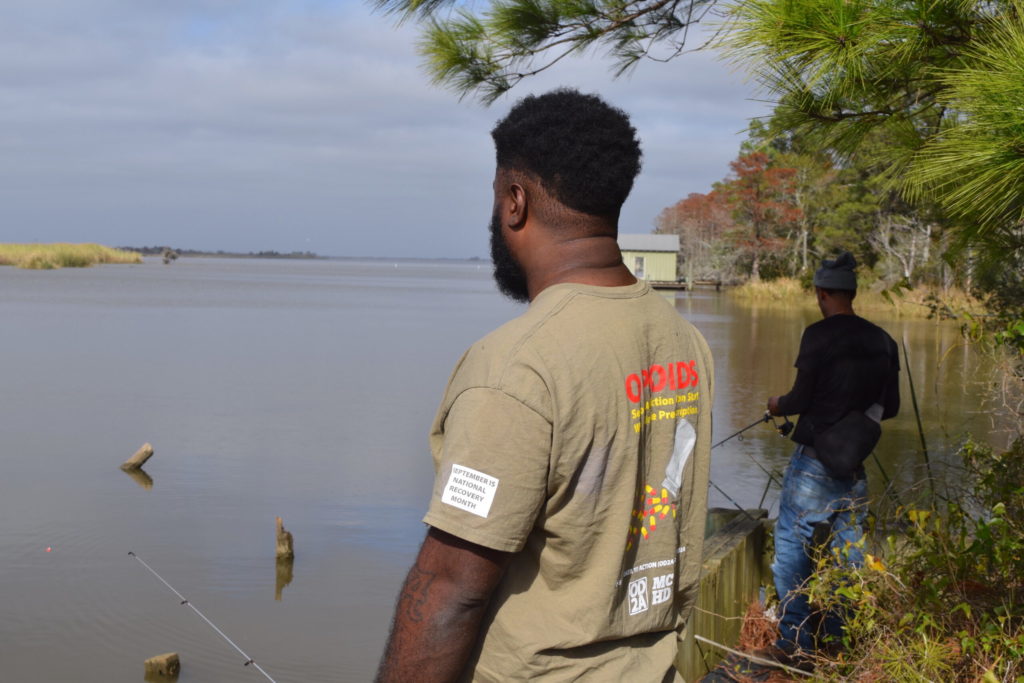
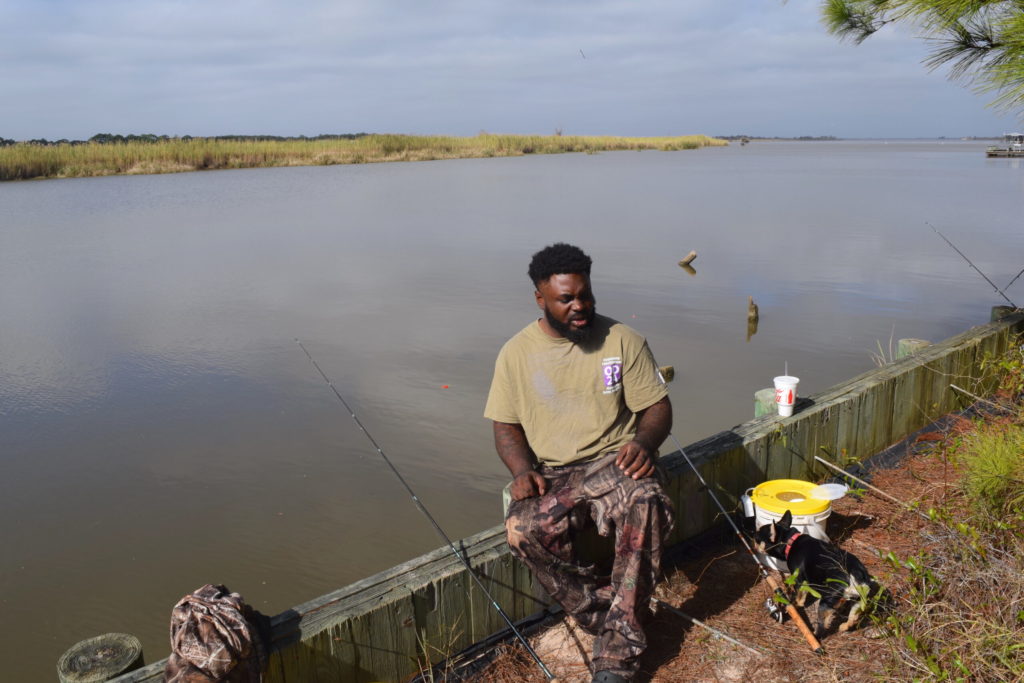
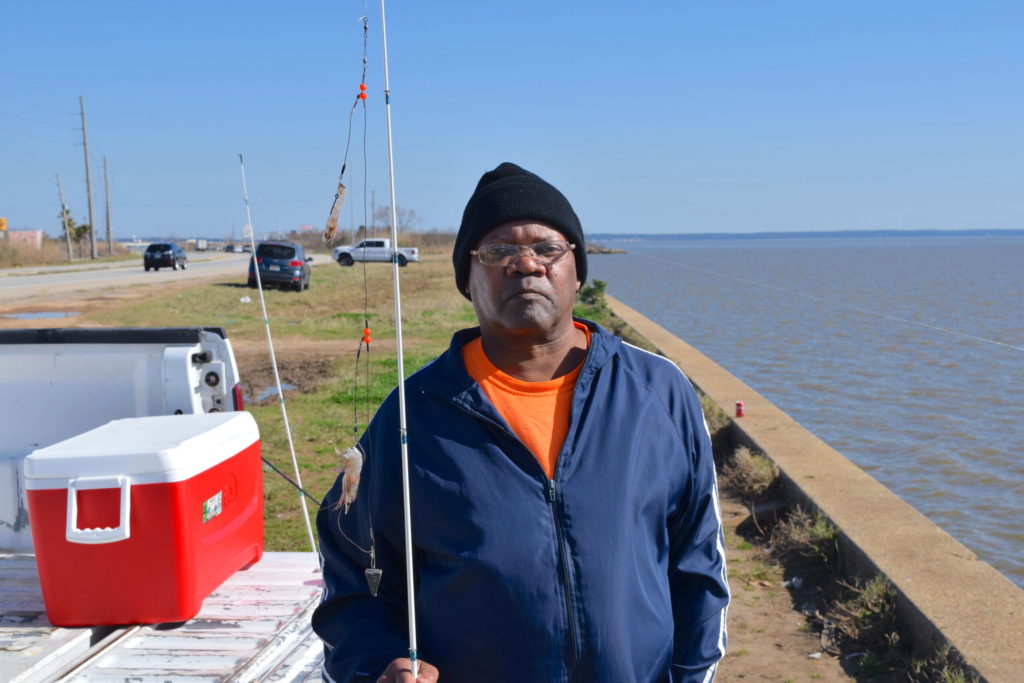
George Bolden remembers coming down to the Causeway in the late 1950s, as a stripling of eight or nine. His family would gather near the plum orchards, which dotted what is now the site of the Austal steel plant, and he and his siblings would spend the day hauling in crabs by the dozen with dip nets, a somewhat lost art that involves wading out into the water and scooping up crabs by hand. They’d pick some plums for dessert, and a feast would ensue that evening.
Now in his mid-seventies and retired from Amtrak, George has spent a lifetime on Mobile Bay, with the exception of a brief stint working up in North Carolina. He’s got a 15-foot aluminum skiff he uses to catch white trout in Deer River, off the Industrial Canal, and what he calls “brown mullet,” or Southern Kingfish, a species of Whiting, off of Daphne’s Eastern Shore.
Today he’s shore-fishing off the Causeway. It’s a warm mid-morning in early February, and he’s sheltered from the sun by the Bayway ramp that hangs overhead. This isn’t his usual spot, but today he’s giving it a try. He’s using scented bait and frozen shrimp, but he hasn’t had much luck. “If you don’t catch anything, it’s just good to be on the water, and I love the peace of mind,” he says. “You don’t have to think about the honeydews at home and all you have to do.”
George echoes the sentiments of fellow angler Carl Grady, and says the fishing, indeed, ain’t what it used to be. There is one watershed moment, he says, where the tide really turned. “The fishing used to be plentiful. Since that oil spill, it just hasn’t been the same, big difference.
George’s life is colored by his childhood memories of Mobile Bay, a watery idyll that you long for as you listen to his stories, but one that seems like ancient history. Still, George recognizes the need to protect what we have left, and restore what we can. “We gotta keep this place clean,” he says. “This is my home and I wouldn’t trade it for no world.”
Pictured in descending order: George Bolden, Finnell Forest, Carl Grady.
